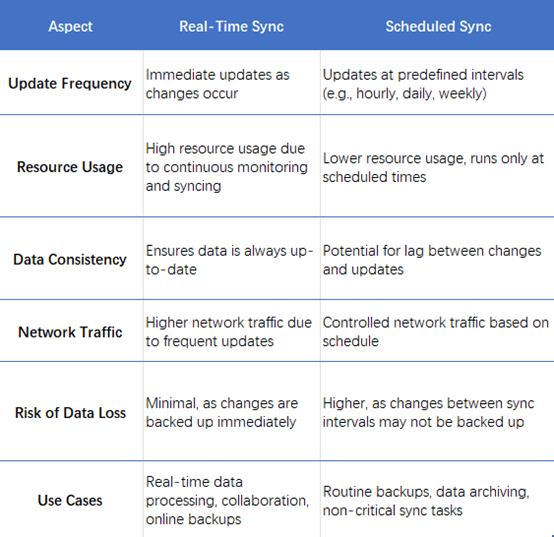AWS S3 sync is a powerful command-line tool, which transfers only new or modified files, thus optimizing the data transfer process and ensuring efficiency.

AWS S3 sync command is a commonly used in the AWS Command Line Interface that allows you to synchronize files between a local directory and an S3 bucket or between two S3 buckets. The AWS S3 synchronization ensures that data in your local environment is consistently synchronized with your S3 buckets.
AWS CLI S3 Sync is used for:

This AWS S3 Sync command compares the source and destination, only transferring the files that are new or have been modified, which optimizes the data transfer process and ensures efficiency.
Here are some examples to illustrate how the AWS S3 sync command is used in different scenarios:
✍Syncing local directory to S3 bucket
This command synchronizes all files from the local directory to the specified S3 bucket.
✍Conversely, to sync an S3 bucket to a local directory:
✍Syncing Between S3 Buckets
This command synchronizes files from one S3 bucket to another.
✍Syncing Specific File Types
You can limit the sync to specific file types using the --include and --exclude parameters. For example, to sync only .txt files:
✍Excluding Files from Sync
Excluding certain files or directories from the sync operation can be achieved using the --exclude parameter. For instance, to exclude all log files:
💥Note: Choosing the right sync strategy is crucial for optimizing performance and cost. AWS S3 sync supports different strategies like one-way sync, bi-directional sync, and hybrid sync.
While real-time sync ensures immediate consistency, it may not always be necessary since it can be resource-intensive.
Scheduled sync operations can be more efficient and cost-effective, especially for large datasets with infrequent changes.
Here is to compare the differences between real-time sync and scheduled sync:

Both real-time sync and scheduled sync offer valuable benefits. Real-time sync is essential for applications that need immediate data consistency, while scheduled sync provides a more resource-efficient and manageable approach for regular data synchronization tasks. By understanding the strengths and limitations of each method, you can make an informed decision that best supports your data management strategy.
AOMEI Cyber Backup is a professional backup software that provides a wide range of backup and recovery solutions. It supports system backups, disk backups, partition backups, and file backups, making it a comprehensive tool for safeguarding data. The software is designed to be user-friendly, with a straightforward interface that guides users through the backup process with ease.
1. Click Target Storage > Amazon S3 > Add Target to open the add target page. Enter your Amazon S3 credentials including username, keyword, and bucket name, then click Confirm. Ensure you have the necessary permissions set up in your AWS account.
2. Click Backup Task > Create New Task to starting archiving your important data to Amazon S3. Select File Backup (for example) and choose files or folders for backup.
3. Check Archiving backup versions to Amazon S3 and click Select to choose the added Amazon S3.
4. Schedule backup task to run daily/weekly/monthly, and select backup retention policies to delete old backups automatically.
5. Click "Start Backup" to begin the backup process. It will first create a backup locally or on the NAS and then upload the backup to Amazon S3.
Q: Does AWS S3 sync overwrite files?
A: Yes, AWS S3 sync overwrites files if the source file is newer or has a different size than the destination file. By default, AWS S3 sync compares both the size and the last modified timestamp of files to determine whether they should be overwritten. If the source file is different, it will replace the destination file to ensure synchronization.
Q: Does AWS S3 sync create duplicates?
A: No, AWS S3 sync does not create duplicates. It is designed to synchronize files between the source and destination by transferring only the files that are new or have been modified. If a file already exists in the destination and has not changed in the source, it will not be transferred again. This behavior ensures that duplicates are not created and that the destination remains consistent with the source.
AWS S3 sync is a versatile and powerful tool that plays a crucial role in ensuring data consistency and reliability across different storage environments. By understanding its features, benefits, and best practices, users can effectively leverage AWS S3 sync to manage their data synchronization needs. Whether syncing data for backup, disaster recovery, or everyday operations, AWS S3 sync provides a reliable and efficient solution for maintaining up-to-date and accessible data in the cloud.